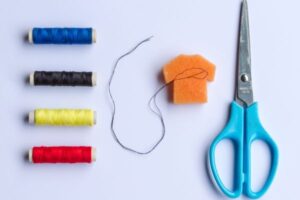Terrariums are a beautiful and low-maintenance way to bring a touch of nature into your home. These miniature ecosystems create a unique and captivating display, making them a popular choice for plant enthusiasts and those seeking a green thumb. Whether you’re a seasoned gardener or new to the world of indoor plants, creating your own DIY terrarium is a rewarding and creative project. In this comprehensive guide, we will explore the step-by-step process of making a DIY terrarium, from selecting the right container and plants to creating the perfect environment for their growth. Get ready to unleash your inner gardener and discover the joy of building and maintaining your very own piece of natural beauty.
Choosing the Right Container
The first step in creating a DIY terrarium is selecting the right container. Look for a glass vessel that is transparent, allowing you to see the layers and the growth of your plants. Popular options include glass jars, fish tanks, or specially designed terrarium containers. Consider the size and shape of the container, as it will determine the overall aesthetic and the types of plants you can incorporate. Ensure that the container has adequate drainage, either through pre-drilled holes or a layer of rocks at the bottom to prevent waterlogging.
Selecting the Perfect Plants
When it comes to choosing plants for your terrarium, it’s essential to consider their compatibility with the environment and their growth habits. Opt for plants that thrive in humid conditions and require low to medium light levels, as terrariums create a miniaturized greenhouse effect. Suitable plant choices include ferns, mosses, succulents, and air plants. Ensure that the plants you select have similar care requirements, as this will make maintenance easier. Consider the height and spread of the plants to create a visually appealing composition within your terrarium.
Creating the Layers
To ensure proper drainage and create a suitable environment for plant growth, layering is essential in a terrarium. Start with a base layer of small rocks or pebbles to facilitate drainage and prevent water accumulation. This layer acts as a reservoir for excess water. On top of the rocks, add a thin layer of activated charcoal to absorb odors and keep the terrarium fresh. The next layer is the substrate, which can be a mix of potting soil, sand, and sphagnum moss. The substrate provides essential nutrients for plant growth. Make sure the substrate is evenly spread and leveled within the container.
Designing the Layout
Designing the layout of your terrarium is where you can let your creativity shine. Consider the visual appeal and balance of the different plant varieties, heights, and textures. Arrange taller plants towards the back and shorter ones towards the front to create depth. Place cascading plants towards the edges to add dimension. Experiment with different arrangements before finalizing the layout. Keep in mind that as the plants grow, they may require occasional pruning to maintain the desired shape and appearance.
Caring for Your Terrarium
Proper care is crucial for the long-term success of your DIY terrarium. Terrariums are relatively low maintenance, but they still require attention and periodic care. Place your terrarium in an area with indirect sunlight, as direct sunlight can cause the glass to heat up and damage the plants. Monitor the moisture levels within the terrarium and water only when the soil feels dry. Avoid overwatering, as it can lead to root rot. Regularly remove any dead leaves or debris to maintain a clean and healthy environment for your plants. If condensation builds up on the glass, briefly open the container to allow air circulation.
Troubleshooting Common Issues
Despite your best efforts, you may encounter some common issues when caring for your terrarium. Yellowing leaves can indicate overwatering, while dry and withered leaves may suggest underwatering. Adjust your watering routine accordingly. Excessive condensation on the glass can be a sign of high humidity, in which case you can temporarily remove the lid to allow some moisture to escape. If mold or fungus appears, gently remove affected parts and improve ventilation. Pay attention to any pests that may appear and take appropriate measures to eliminate them.
Creating Variations: Closed vs. Open Terrariums
Terrariums can be classified into closed and open types, each with its own unique characteristics. Closed terrariums have a sealed environment that recycles moisture, requiring minimal watering. They create a self-sustaining ecosystem but may require occasional venting to prevent excessive condensation. Open terrariums, on the other hand, allow for more air circulation and require regular watering. Choose the type that best suits your desired plant selection and maintenance preferences.
Enhancing Your Terrarium with Accessories
Add a personal touch to your terrarium by incorporating accessories that complement its theme and style. Small figurines, decorative rocks, tiny ornaments, or miniature fairy garden items can add whimsy and charm. Be mindful not to overcrowd the terrarium, as the focus should still be on the plants. Use accessories sparingly to enhance the overall aesthetic without overpowering the natural beauty of the plants.
Expanding Your Terrarium Collection
Once you’ve successfully created your first terrarium, you may find yourself eager to expand your collection. Experiment with different container shapes, sizes, and designs to create a diverse display. Explore unique plant varieties and create themed terrariums, such as desert-themed or tropical-themed ones. With each new terrarium, you’ll gain more experience and knowledge, allowing you to refine your skills and create even more stunning displays.
Sharing and Enjoying Your Terrariums
Don’t keep the beauty of your DIY terrariums to yourself! Share your creations with friends and family, and let them inspire others to embark on their own terrarium-making journeys. Display your terrariums in various locations throughout your home, such as on windowsills, desks, or shelves. Take the time to appreciate the growth and changes within your terrariums and bask in the beauty and tranquility they bring to your living spaces.
Troubleshooting and Maintenance Tips
Even with proper care, you may encounter occasional challenges or changes in your terrarium. It’s important to stay vigilant and address any issues promptly. Regularly monitor the moisture levels, ensuring that the soil is neither too dry nor too wet. Adjust your watering routine as needed. If you notice any signs of disease or pests, take immediate action to prevent them from spreading to other plants. Regularly prune and trim your plants to maintain their shape and prevent overcrowding. Stay observant and attentive to the needs of your terrarium to ensure its long-term health and beauty.
Upcycling Containers for Terrariums
One of the great aspects of creating terrariums is the opportunity to upcycle various containers and give them new life. Look around your home for unique and interesting vessels that can be repurposed as terrarium containers. Old jars, vintage glassware, or even broken or chipped ceramic pots can be transformed into stunning homes for your plants. Get creative and experiment with different shapes and sizes to create a diverse and visually appealing collection of terrariums. Upcycling not only adds character to your terrariums but also helps reduce waste and contributes to a more sustainable lifestyle.
Conclusion
Creating and caring for your own DIY terrariums is a rewarding and creative endeavor that allows you to bring the beauty of nature into your living space. By following the step-by-step guide, you can confidently build a stunning terrarium, selecting the right container, choosing suitable plants, layering materials, and designing an appealing layout. With proper care and attention, your terrarium will thrive and become a source of joy and tranquility.
Remember, each terrarium is a unique expression of your creativity and personal style. Experiment with different plant combinations, container shapes, and accessories to create a diverse collection of terrariums. Troubleshoot and address any issues promptly, and enjoy the process of watching your plants grow and thrive in their miniaturized world.
So gather your materials, unleash your imagination, and embark on your terrarium-making journey. Discover the therapeutic benefits of connecting with nature and enjoy the beauty and tranquility your terrariums bring to your home. With patience and care, your DIY terrariums will become captivating showcases of nature’s wonder. Happy terrarium making!



